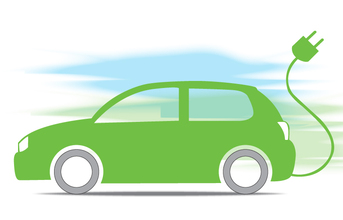
Light material with a better strength-to-weight ratio will be extensively used in future vehicles, in order to improve the vehicle performance and also to meet the other performance requirements such as safety, NVH and emissions. New surface finish technology will not only improve the aesthetics but also make it possible to change the colour tone/shade as per the requirements of the customer; scratch/dent resistant technology which can render long life, along with new innovations in Graphene type single molecular nano-material technology, will open up a world of energy absorbent PV with multi sensors, smart communication and heat shield application which will make the vehicle altogether smarter and lighter. Active power generation through an inbuilt solar cell, fuel cell technology, active
transmission, Gyro stability and power distribution using active sensors are some additional areas where PP will drive new innovation. City transportation will have increasing use of pure electric drive train, fuel cell and other green transmissions
with zero carbon foot print. Regenerative braking, high speed charging, remote charging, auto loading battery banks coupled with charging through green energy are some of the other technologies which will have an increasing share and competitive advantage. Intercity and cross-country transportation will be using hybrid drive train along with smart shield to generate PV power while on the move. Liquid fuel will be slowly replaced with liquefied / compressed gaseous fuel with better combustion efficiency, or a complete transition to fuel cell technology.
Cloud computing, high speed wireless communication and fully loaded active sensors will make the automotive a smart, auto driven means of intelligent transportation which can communicate effectively with the surrounding
environment, manage its internal assets more proactively and at the same time seamlessly follow the regulatory requirements. The ICC sector will see considerable innovation at a much faster pace than expected, and will be the biggest game changer in the automotive industry, where many of the crucial issues can be addressed at once. At the same time it can provide reliable, technology based solutions for transportation as a whole.
Driver Assist System (DAS) is the latest advancement in vehicle telematics which will have increasing application in lane departure and blind spot warnings, adaptive cruise control, automatic braking and collision avoidance, vision aides and night vision in order to help the driver to better manage the system. Ultrasonic
sensors as well as a radar and LIDAR based 3D view of the environment help in facilitating communication between the vehicle and the environment, and represent a step forward towards a driverless car.
So, the industry is prepared for both disruptive and incremental
innovation where material scientists, mechanical designers and IT professionals will have an ever increasing role to play, and where many non-traditional auto companies like Google and Apple will be rubbing shoulders with major auto companies. Ultimately, who will steal the show, only time can tell; but without a doubt the industry and the consumer will be the ultimate beneficiaries.
The article is written by Dr. Dhananjay Kumar MD (EV program) & Director (BD), Thor Power Corporation, PA 18109, USA
END


























